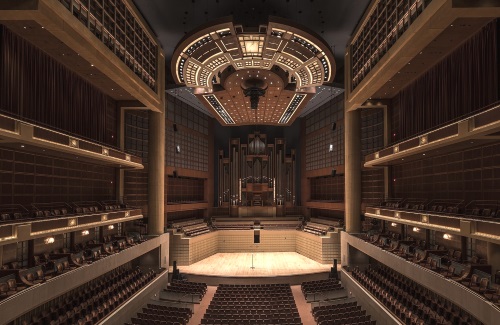
Practical Implications
It is indeed possible and practical to suppress some of the effects of loudspeaker/room interaction. If this was not possible, it would be standard practice to equalize your rig in the shop, put a steel case around the EQ rack and hit the road.
The practical side of it is that we must be realistic about what is attainable and what are the best means of getting there.
The variations in frequency response due to both speaker/speaker interaction and loudspeaker/room interaction will always change with position.
Once you have seen high-resolution data at multiple positions, you can never go back to thinking that your equalization will solve problems globally.
A system that has the minimal amount of the above interactions will have the greatest uniformity throughout the listening environment and, therefore, stand to gain the most practical benefit from equalization. If it sounds totally different at every seat, let’s just tweak the mix position and head to catering.
To minimize the loudspeaker/loudspeaker interactions requires directional components, careful placement and precise arraying. In areas where the speakers overlap, time delays and level controls will minimize the damage in the shared area. To minimize loudspeaker/room interaction, the global solutions lie in architectural modification (it’s curtain time), the selection of directionally controlled elements and precise placement.
Finally you are left with equalization. For each subsystem with an equalizer, map out the response in the area by placing a microphone in as many spots as you can and see what the trends are.
In particular, measure around the central coverage area of the speaker. Stay away from areas of high interaction, where the response will vary dramatically every inch.
Examples of this include the seam between two cabinets in an array or very close to a wall. Each position will be unique, but if you place filters on the top four to six repeat offenders you will have effectively neutralized the response in that area.
Conclusion
Modern analyzers are capable of displaying a dizzying array of spectral data. But little practical benefit will come to us if we continue with the antiquated approach of the RTA era. To fully take advantage of the benefits of equalization, we must fully comprehend how to identify the mechanisms that “unequalize” the system.
With modern tools, it becomes possible to analyze the response such that the interactive factors of loudspeaker systems can be distilled and viewed separately. This allows the alignment engineer to prepare the way for successful equalization by using other techniques that reduce interaction and maximize uniformity in the system.
“Equalizing the room” will remain in the domain of architectural acousticians, but with advanced tools and techniques, we can proceed forward to better equalize the speaker system in the room.
